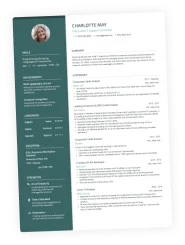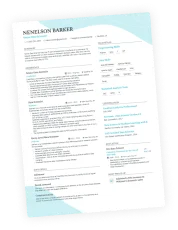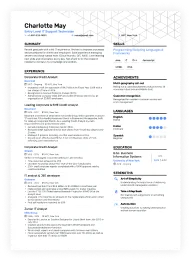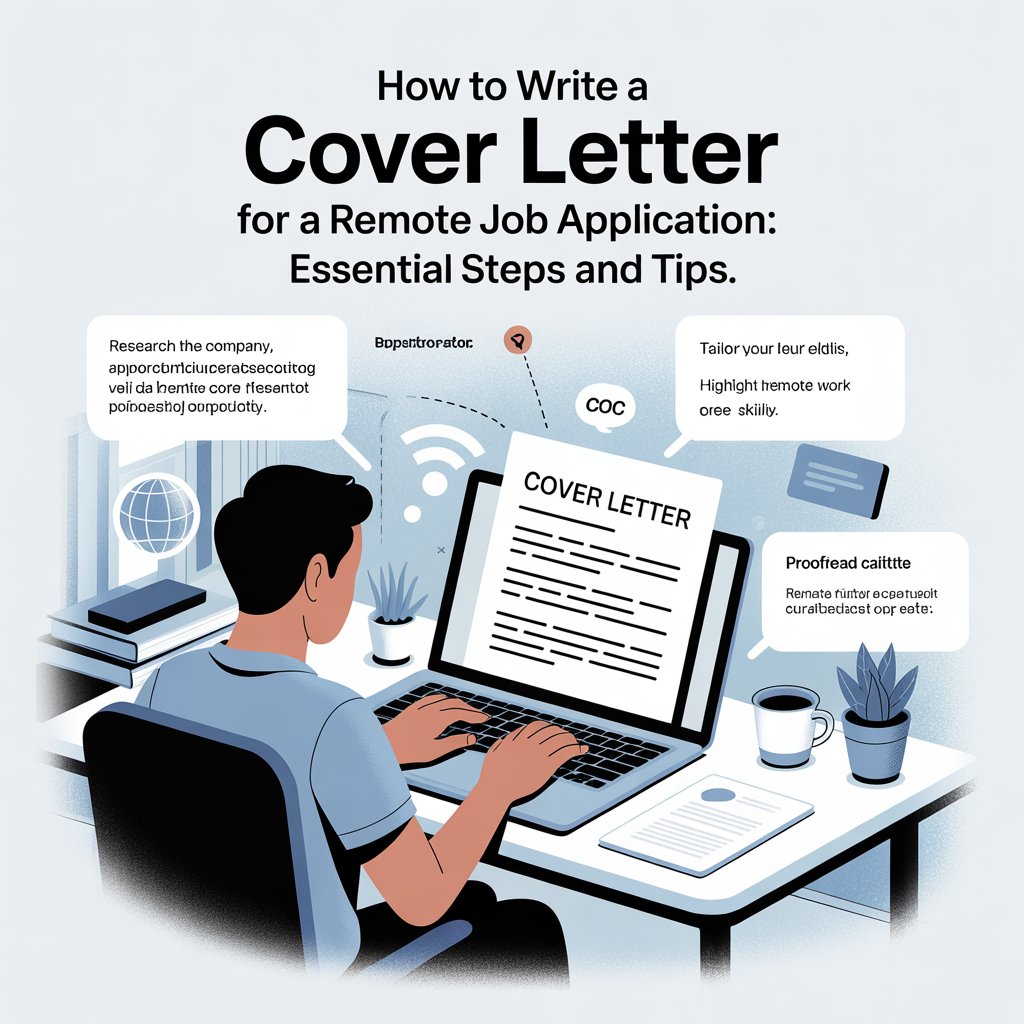Switching careers to tech can feel challenging, especially if someone has never written a cover letter for the industry before. A strong cover letter for a tech career change highlights transferable skills, relevant experience, and shows the employer how the candidate can bring value to their team right away. This is a crucial step, because a cover letter gives applicants a chance to go beyond their resume and explain why they are ready for this new field.

For anyone unsure where to start, simple tools like RoboApply can help job seekers build their resume, create a professional cover letter, and even auto-apply to jobs across platforms like LinkedIn and Indeed. Learning how to connect past work experience with tech job requirements can boost confidence and help applicants stand out to recruiters. Readers will find clear strategies, proven examples, and step-by-step advice in this guide to help make their transition into tech smoother and more successful.
Understanding the Unique Aspects of a Tech Career Change
Changing careers to tech means understanding both what you already bring to the table and what the market expects. Success depends on recognizing your transferable skills, studying where the jobs are, and thinking carefully about what tech companies value most in their teams.
Recognizing the Transferable Skills You Bring
People moving into tech often focus too much on what they lack, like specific coding languages or platforms. However, many core skills from other industries are valuable in tech. These include problem-solving, project management, communication, and adaptability. Tech companies need individuals who can organize tasks, explain concepts, and learn quickly.
A good way to show these skills is in your resume and cover letter. For example, if you managed projects in retail, explain how you kept things on track, hit deadlines, or adapted to changes. Use action words and clear outcomes.
To gain confidence, job seekers should use resume builders like RoboApply to highlight these skills and match them to tech job requirements. RoboApply can help users create a professional cover letter and optimize each resume for the roles they want.
Example: Cover Letter Highlighting Transferable Skills
Dear Hiring Manager,
I am writing to express my interest in the Junior Software Tester position at CodeLab. My background as a project coordinator in health care has prepared me for success in the tech field.
In my previous role, I managed cross-team projects, tracked bugs, and kept key stakeholders updated on progress. I learned to prioritize urgent issues and translate user feedback into clear action plans. These experiences taught me to look for patterns, solve problems quickly, and communicate clearly with team members from different backgrounds.
This attention to detail and strong organization fit perfectly with software testing. I have recently completed an online course in software QA and am eager to bring these new technical skills, combined with my proven communication abilities, to your team.
Thank you for your time and consideration.
Sincerely, Jordan Smith
Assessing the Tech Job Market
The tech industry includes many sectors, including software, e-commerce, healthcare IT, fintech, and artificial intelligence. Some areas continue to grow fast and are in need of new talent, even from non-traditional backgrounds.
Before sending out applications, job seekers should research which tech roles are in high demand, like data analysts, support engineers, or cybersecurity specialists. Tools such as RoboApply make it simple to auto-apply to jobs across platforms and track which fields match their current skills best.
A helpful step is to use job boards and platforms like LinkedIn or Indeed to read several job ads. Make a list like the one below to compare skill requirements:
| Job Title | Key Technical Skills | Common Soft Skills |
|---|---|---|
| Data Analyst | Excel, SQL, Python | Communication, Detail-Oriented |
| Technical Support Rep | Troubleshooting, CRM | Patience, Problem-Solving |
| QA Tester | Test Cases, Selenium | Organization, Accuracy |
Matching your background to the right segment of tech will improve your chances of landing interviews and finding roles that suit your experience.
Example: Cover Letter Based on Market Research of Tech Roles
Dear Ms. Chen,
I am excited to apply for the IT Support Specialist opening advertised on your website. After exploring the current job market and completing online training in network troubleshooting, I see a strong match between your needs and my background in customer service.
At my previous job, I handled complex client issues, often acting as the main contact for urgent problems. I learned to document steps, explain solutions to non-technical people, and juggle several priorities at once. Tech companies need this blend of technical skill and clear, friendly communication.
I am eager to transfer these abilities—along with my new CompTIA A+ certification—into IT support. Your company’s commitment to ongoing learning and teamwork appeals to me.
Thank you for reviewing my application.
Best, Taylor Green
Identifying Core Values in Tech Companies
Tech companies often focus on values like collaboration, innovation, continuous learning, and diversity. Understanding these values will help job seekers tailor their applications and stand out.
Many organizations use values-driven interview questions to assess cultural fit. It’s important to research a company’s mission statement, check their careers page, or read employee reviews for information on work environment and values.
Common values in tech include:
- Embracing change and new ideas
- Supporting teamwork and open communication
- Promoting diversity and inclusion
- Encouraging continuous skills improvement
By showing how your past work reflects these values, you make a stronger impression. Use your cover letter to illustrate a time you learned a new tool or helped solve a team challenge.
Job seekers can build their resume with RoboApply and use these values to customize their applications, helping them align with what tech employers are looking for today.
Structuring Your Cover Letter for a Tech Role
A strong cover letter for a tech job is clear and purposeful. It opens with a direct statement of intent, uses respectful language to address the hiring manager, presents relevant tech skills, and finishes with a confident ask for an interview.
Crafting an Engaging Opening Paragraph
The opening paragraph should state the job being targeted and make it clear the candidate is changing careers into tech. This is not the place for vague interest—state it plainly. Mention how the skills from past roles will benefit the company.
For example:
I am applying for the Software Engineer position at ABC Tech because I am passionate about using data to solve real-world problems. With a background in healthcare project management, I have developed strong problem-solving and communication skills that I am eager to apply in a technical environment. My recent certification in Python and hands-on work with automation show my readiness for this career change.
By leading with confidence and specifics, candidates can instantly show why they should be considered.
Example Cover Letter Opening
Dear [Hiring Manager’s Name],
I am excited to submit my application for the Junior Software Developer position at DEF Technologies. After years working as a logistics coordinator, I recently completed a full stack coding bootcamp and built several web apps. My history of streamlining processes, paired with my new skills in JavaScript and Python, will let me contribute to your team from day one.
Addressing the Hiring Manager Professionally
Always start the cover letter with a professional greeting. If possible, address the hiring manager by name. This shows care and effort. “Dear Hiring Manager” is the next best option when a name can’t be found.
Researching the manager’s name on LinkedIn or the company website is worth the extra work. RoboApply’s tools can also help by identifying key details to personalize your letter.
A professional greeting sets a respectful tone:
- “Dear Ms. Smith,”
- “Dear Mr. Johnson,”
- “Dear Hiring Manager,”
Avoid greetings like “To whom it may concern” or “Hey.” Use a formal greeting in line with tech industry standards.
A tailored greeting, combined with the right tone, quickly signals attention to detail and professionalism.
Presenting Your Relevant Qualifications
This is the section to connect previous experience to the tech role. Begin with a sentence naming the most relevant skill or qualification, then back it up with proof.
Emphasize transferable skills such as problem-solving, data analysis, teamwork, or project management. Follow up with new technical education or hands-on experience, like coding bootcamps, self-taught projects, or certifications.
Bullet points can help highlight qualifications:
- Completed Google IT Support Professional Certificate
- Built a task management app in React used by 50+ students
- Led a team project using Agile methods at previous job
Action verbs and direct language work best here. Job seekers can use RoboApply to optimize your resume and create a professional cover letter tailored for each application. Matching your qualifications to the job posting gives you an edge.
Example Qualifications Paragraph
Over the past year, I built core skills in HTML, CSS, and JavaScript through hands-on projects and a Google UX Design Certificate course. My past role as a teacher honed my communication and troubleshooting skills, which I now bring to user testing and project sprints. I am adept at working across diverse teams to deliver technical solutions under tight deadlines.
Concluding With a Strong Closing Paragraph
A good closing paragraph should:
- Reaffirm interest in the job and company
- Sum up fit for the position
- Politely invite the hiring manager to reach out for an interview
Keep it short but warm. Show some enthusiasm for the next steps. Restate how your past plus your new tech skills will help the company succeed.
Example closing:
Thank you for considering my application for the IT Support Specialist role. I am eager to bring my customer service experience and new technical skills to your team at GHI Tech. I welcome the chance to discuss my background further and share how I can contribute to your mission.
Including a strong, confident closing line is key. Those using RoboApply can auto-apply to jobs across platforms and ensure each cover letter is ready for submission, saving time while improving quality.
Showcasing Your Value as a Career Changer
Moving into tech from another field can be a big step, but it also lets job seekers present unique strengths. Focusing on adaptability, transferable skills, and strong communication builds a case for their potential in a new industry.
Highlighting Adaptability and Learning Mindset
Employers in tech want people who can adapt to new tools, work environments, and problems. Highlighting adaptability shows that a candidate is ready for fast changes and doesn’t shy away from learning.
Job seekers can give examples where they quickly picked up a new system or technology in a former role. Listing online courses, certifications, or self-guided learning in programming, data analysis, or a new workflow makes a strong impact.
Talking about handling unexpected challenges helps, too. For instance:
In my previous role as a healthcare coordinator, I led my team through a switch from paper records to electronic health records. I became skilled with the new software within two weeks and trained my coworkers, which cut downtime by 30%. This experience taught me how to stay focused, quickly absorb new information, and support my team during transitions.
Career changers can use resources like online bootcamps, tutorials, or workshops to build learning momentum. Using a platform like RoboApply to “optimize your resume” for roles that value continual learning can reinforce this quality.
Demonstrating Relevant Skills and Qualifications
Candidates should clearly show the tech skills and qualifications that match the job. Listing any technical certifications, coding courses, or completed projects related to software, IT, or data analysis is important.
Creating a section in the cover letter that maps previous skills to the new job helps hiring managers connect the dots. A simple table may help:
| Previous Skill | Tech Application |
|---|---|
| Budget management | Data analysis with Excel |
| Report writing | Technical documentation |
| Project leadership | Agile software development |
Here’s an example that brings it all together:
As a marketing analyst, I learned data analysis using Excel and Python. I completed the Google Data Analytics Certificate and analyzed customer engagement metrics for my team. For this role, I bring both my technical skills and my experience presenting complex data in simple terms. Using RoboApply, I was able to “create a professional cover letter” that matches my skills to the job posting automatically.
A straightforward breakdown removes confusion and emphasizes qualifications the employer is actually seeking.
Emphasizing Communication and Problem-Solving
Tech teams rely on shared knowledge, clear updates, and strong problem-solving to finish projects on time. When writing a cover letter, candidates should focus on explaining past experiences where they worked with others to fix problems or shared solutions simply.
Bullet points can organize strong traits:
- Explained software updates to non-technical users
- Wrote step-by-step troubleshooting guides
- Acted as a go-between for tech and non-tech teams
- Helped solve process bottlenecks
Example:
In my last job as a retail manager, I noticed long checkout lines during holiday sales. By brainstorming with staff and analyzing customer patterns, I suggested a new system for scanning items faster. After working with IT to set it up, lines dropped by 40%. This taught me to identify problems, communicate clearly, and work with tech to find solutions.
Showing strong written and spoken communication matters as much as showing coding or data skills. By using cover letter and resume tools, job seekers can organize these stories and “auto-apply to jobs across platforms,” giving them more chances to stand out.
Customizing Your Cover Letter for Each Tech Job
Writing a cover letter that fits each tech job means matching your experience and strengths to what the employer is looking for. Job seekers can stand out by studying the job description, picking out key skills, and showing exactly how their background matches the company’s needs.
Analyzing the Job Description Carefully
A strong cover letter starts with a careful review of the job description. Tech job postings often list both must-have and nice-to-have skills. Job seekers should list these skills in a table or bullet points as they review the job posting. For example:
| Must-have Skills | Nice-to-have Skills |
|---|---|
| Python, SQL | Docker, AWS |
| Data analysis | Machine learning basics |
Highlighting required tools and systems, programming languages, or certifications is key. Take note of repeated phrases or skills mentioned more than once.
This process helps job seekers tailor their wording and examples. For those looking for extra help, platforms like auto-apply to jobs across platforms make comparing and matching job descriptions easier.
Aligning Your Experience With Job Openings
Once the skills and requirements are clear, the next step is to align experience with the job opening as closely as possible. Even if a person comes from a different field, it’s important to draw direct lines between past achievements and the tech role.
Use bullet points to connect experience with tech tasks:
- Managed projects using spreadsheets → “Experience with data organization and reporting using Excel, which translates to database management skills.”
- Taught classes in math → “Strong analytical and problem-solving abilities critical to software QA roles.”
- Led a retail team → “Leadership and communication skills useful for agile development environments.”
Job seekers can use tools to optimize your resume and ensure these matches are clear. RoboApply provides instant feedback on how well resumes and cover letters fit tech job descriptions.
Example Cover Letter: Aligning Experience
Dear Hiring Manager,
I am excited to apply for the Junior Data Analyst position at TechBridge. My background in teaching high school math has prepared me with deep analytical skills and the ability to solve complex problems daily. I frequently used Excel and Google Sheets to track student progress, which translates into strong data processing abilities.
Beyond this, I led a school project to digitize attendance records, improving record accuracy and cutting reporting time in half. I am eager to move into tech, where my experience in data analysis, attention to detail, and love for technology can make an immediate impact at TechBridge.
Thank you for considering my application.
Sincerely,
Jordan Riley
Being Specific About Your Contributions
Potential employers prefer concrete examples. When writing about past contributions, the job seeker should be as specific as possible. Use numbers, time-frames, and results to give proof.
- Instead of: “Helped manage projects.”
Use: “Managed a five-person team to deliver a software update two weeks ahead of schedule.” - Instead of: “Worked with data.”
Use: “Analyzed over 10,000 sales transactions to spot market trends, helping the team boost revenue by 12%.”
When shifting into tech, even small wins count if presented with clear, specific results. This approach shows the employer exactly what the applicant is capable of.
RoboApply can help users create a professional cover letter by offering templates and personalized feedback on how to be specific and results-driven. This gives applicants confidence their cover letter stands out in competitive tech job openings.
Making a Positive Impression and Maximizing Opportunities

When writing a cover letter for a career change to tech, it is important to present a confident and genuine introduction. Focusing on personality, notable achievements, reputation, and using proven examples can help set a person apart from other applicants.
Showcasing Your Personality and Values
A strong cover letter should reflect a person’s unique personality and core values. This helps show hiring managers who the applicant is beyond work skills. Sharing why tech matters personally, mentioning a passion for learning new tools, or describing a commitment to teamwork creates a more memorable impression.
It is helpful to use specific words and short stories that reveal honest interest. For example, someone transitioning from teaching to tech could share how they love solving problems and helping others grow. Using clear language and tying values to the company’s mission also adds value.
Highlighting values is most effective when paired with genuine enthusiasm. Some applicants explain what first drew them to tech, or how they noticed the power of technology to solve real-world challenges.
Using a tool like RoboApply to create a professional cover letter allows job seekers to experiment with different ways of expressing personality until they find the tone that fits them best.
Incorporating Results and Achievements
Recruiters are more interested in what an applicant has accomplished than in just a list of tasks. To make a positive impression, it is important to share clear results or achievements. This means including facts and numbers whenever possible.
For instance, a person moving from retail management to tech could mention, “Managed a team of 12, boosting sales by 20% in six months.” These types of details help hiring managers see transferable skills.
If an achievement is not easy to measure with data, use specific examples. For example, “Trained new staff on software tools, which improved team performance and reduced errors.” Bullet points are helpful for quick reading. Consider listing:
- Increased efficiency by implementing new workflows
- Led training sessions on new technology
- Designed and launched a small app or tool
Applicants can also optimize your resume and cover letter with RoboApply, ensuring their top achievements are shown clearly.
Demonstrating Networking and Reputation
A cover letter is a chance to highlight reputation and make connections. Sharing a brief story about networking or mentioning trusted contacts can help build trust.
If someone had a referral, it can be mentioned in the introduction. For example: “After speaking with Jane Smith, your Lead Engineer, I became very interested in how your team uses technology to solve customer issues.” This shows that the applicant took the time to connect and learn.
Reputation also includes things like positive feedback from previous managers or awards won in past jobs. Including a short statement such as, “Consistently rated as a top performer in my department,” adds credibility.
Participating in tech meet-ups, code challenges, or online communities can show a real commitment to learning. Job seekers can build their resume with RoboApply to showcase roles in such communities.
Utilizing Cover Letter Examples for Inspiration
Reading or using examples makes cover letter writing easier. Applicants can find many career change cover letter samples online that cover various roles and backgrounds.
When reviewing examples, look for how others handle talking about career changes and what details stand out. Examples should show how to balance old job skills with new tech goals. The best samples connect achievements from previous roles with the skills needed for the new job.
Job seekers who use platforms like RoboApply can access guided cover letter templates. These templates give step-by-step help, so users can fill in their own information and make each letter unique to their experience. Remember, it is always important to customize any sample to match a specific company and position.
Final Steps: Proofreading and Application Submission

Careful attention to detail can determine whether a job seeker makes a great impression or gets overlooked. Making sure that every part of a cover letter and resume is error-free, accurate, and professionally presented helps show hiring managers that the applicant is serious about the new opportunity.
Proofread for Clarity and Accuracy
Always proofread the entire cover letter, checking each sentence for spelling, grammar, and punctuation mistakes. Typos and unclear wording can make a job seeker look careless, especially in competitive tech fields.
Reading the cover letter aloud can help catch awkward phrasing and errors that might be missed by only scanning the text. It may also help to use tools like spell check or online grammar correctors, but do not rely only on them.
Ask a friend or colleague familiar with digital marketing or tech jobs to review the letter. A fresh pair of eyes can help find confusing sentences or unclear details. Checking for consistent formatting is just as important—matching fonts, correct headings, and proper spacing show professionalism.
Try reading the cover letter backwards, sentence by sentence, to focus on each word’s accuracy. Also, compare the cover letter to the job listing, making sure every required skill is addressed clearly and directly.
Adding Correct Contact Information
Including up-to-date and correct contact information helps ensure a hiring manager can reach the candidate. Before submitting any applications, review the top of the cover letter for errors in the phone number, email address, and LinkedIn profile link.
Make sure that all details match those found on the resume. Mismatches or typos may cause confusion or missed connections. Many tech companies rely on quick communication, so even one number out of place may result in a lost opportunity.
Use a professional email address—something simple, like Firstname.Lastname@email.com. Avoid using old personal emails or nicknames, as these can look unprofessional. Double check that hyperlinks are working, especially if referencing a digital portfolio or GitHub profile.
Keep a short, clear signature at the bottom of the cover letter with full name and phone number. Accurate contact details let hiring managers easily schedule interviews or follow-up about the application.
Coordinating Your Resume and Cover Letter
Make sure the information on the cover letter matches what is on the resume. This includes job titles, dates, and technical skills. Mistakes or mismatches can confuse hiring managers or raise questions about honesty.
If the cover letter mentions specific achievements in digital marketing or a tech-related project, those accomplishments should be listed in the resume as well. Consistency between documents helps create a trustworthy application.
Use the same design elements in both the cover letter and resume, such as font type and size, spacing, and layout. This creates a professional look. Job seekers can use online tools to help, or even use RoboApply to build your resume with RoboApply so everything matches for a stronger application.
Before applying, review both documents together side by side. Make sure the skills and experience highlighted fit the job description and the target role. Adjust the documents as needed so both showcase the most important strengths for the switch to tech.
Preparing for the Interview Process
Once a job seeker submits a polished application, it is wise to prepare for interviews right away. Research the company’s products, mission, and any recent tech projects. This can help create confident answers when asked why they want to change careers and how their background in another field, like digital marketing, is relevant.
Practice answering common interview questions out loud. Developing clear, short answers ahead of time reduces nerves. Review the resume and cover letter before the interview to keep stories and examples consistent with what was submitted.
Prepare a list of thoughtful questions for the interviewer, such as inquiries about company culture, mentorship for new tech team members, or upcoming digital marketing projects. Setting up a quiet space for video interviews and checking technology in advance helps avoid last-minute technical issues.
Being ready ahead of time shows hiring managers the candidate is serious about the transition and prepared to make a strong contribution in a tech role.
Frequently Asked Questions

Switching to tech from a different career means explaining unique experiences, addressing skill gaps, and showing how past achievements are valuable in a new setting. Readers can find actionable ways to tailor every part of the cover letter to stand out and show readiness for a tech role.
What steps should I include in my cover letter when changing careers into the tech industry?
Begin with a clear introduction that states the job being applied for and the intention to shift into tech. Briefly mention your current or previous profession and why you want to move into the tech field.
Explain your key strengths, focusing on qualities that apply to both your old and new career. Share short examples of how you used problem-solving, teamwork, or time management, especially if they relate to tech jobs.
Close by expressing your interest in learning and growing in the tech industry. Use specific reasons you are drawn to the company or role, not generic statements. Writing a cover letter from scratch and analyzing the job description helps show why you are a fit, as suggested in this guide.
How can I effectively highlight transferable skills in a tech-oriented cover letter?
Identify the top skills from your past jobs that will matter in tech, such as project management, data analysis, or communication. Use each skill in a sentence that shows the result of your work.
For example, say, “At my last job, I led a team project that finished two weeks early due to careful planning and quick use of online tools.” This shows you can handle tasks and adapt to tech-based work.
Mention any tech-related tasks you completed, like using spreadsheets, database tools, or simple coding. Relating your skills to the job requirements is key as highlighted in career change cover letter advice.
What key elements should be present in a cover letter for someone with no tech experience?
Start by sharing your excitement about moving into tech and your long-term interest in technology. Include specific examples of times you had to learn new systems, apps, or digital skills in previous jobs or personal projects.
List relevant coursework, certificates, or online classes you completed, such as coding bootcamps or software tutorials. Show a willingness to learn and grow, which is important for newcomers.
Clearly say how your non-tech experience makes you a unique choice for the company. For example, good communication from customer service or careful planning from teaching can help tech teams work smoothly. This matches tips in writing a career change cover letter.
How can I address a career gap in my cover letter when transitioning to a tech role?
Be honest but brief about the gap. State the reason, such as family, health, or further education, and quickly turn the focus back to your readiness for work.
If you did any freelance work, volunteered, or learned new skills during your gap, mention these as proof of being active and independent.
For those who used the gap to learn tech skills, list the certificates or tech-related side projects completed. This shows both initiative and interest in tech.
In what ways can I align my non-tech background to the demands of a tech job in my cover letter?
Match soft skills like problem-solving, leadership, or attention to detail to tech job needs. Describe past situations where you solved problems with limited resources or handled difficult projects.
Share facts about how you adapted to new technology at your old job, managed remote teams using online tools, or tracked data to improve results. Use clear sentences that connect these actions to what is expected in the tech role.
Describing how skills from teaching, customer service, or sales lead to success in tech builds a strong case. This method is explained well in how to explain a career change.
What strategies can I use in my cover letter to stand out as a career changer entering the tech field?
Tell a short story about why you want to enter tech, using a personal experience or moment that inspired you. This can help readers relate and remember your letter.
Share side projects, freelance work, or volunteer experience related to tech. If possible, link to a coding portfolio, website, or project on GitHub. Employers look for proof of drive and a willingness to learn new things.
Format your letter carefully, keep messages direct, and avoid jargon. Using tools like RoboApply can speed up the process, help you create a professional cover letter, and auto-apply to jobs across platforms. This saves time and increases the chances of landing interviews especially when entering a new field.








